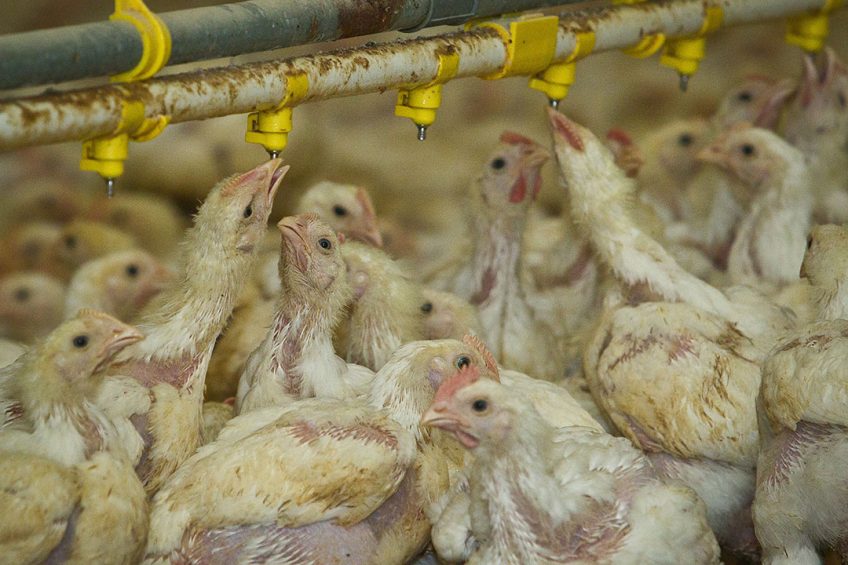Impact of butyrate on gut health

Although the functions of butyrate might be familiar to many, is the impact of butyrate the same in the distinct GIT segments on digestive function, microbiota composition and immune responses?
Based on the research findings of Moquet in broilers, Poultry World sheds more light on the effects of butyrate on different segments of the GIT as it contributes to gut health in broilers. The interesting questions to answer are:
- What are the effects of supplementing broiler diets with butyrate on digestive function, microbiota composition and immune responses?
- Are these effects influenced by the GIT segment?
Not many studies have focused on butyrate concentrations along the GIT. Hence, it remains uncertain whether the effects elicited by butyrate are conditioned by the GIT segment wherein the molecule is present. Failure to understand this, might limit the full use of butyrate supplements as a nutritional strategy in the poultry industry.
Functions of butyrate
Butyrate is used as a feed additive and can be fed as unprotected or in the form of protected additives such as butyrate glycerides (mono-, di- and tri-glycerides) or butyrate-loaded matrices (fat coated or microencapsulated butyrate). In poultry, dietary butyrate supplementation has been shown to result in maintaining optimal gut health and stimulating growth performance, a positive effect on gut morphology, improved carcass traits (reduce fatty carcases), improved nutrient digestibility – also an energy source, bacteriostatic properties and improvement of the birds immune response.
Modes of action in the gut
Butyrate down-regulates pro-inflammatory pathways by inhibiting cytoplasmic kinase – resulting in the production of pro-inflammatory cytokines such as tumour necrosis factor α or interleukins 1β, 2 and 6 (Barnes and Karin, 1997). In poultry, these proinflammatory cytokines induce a homeorhetic response that modifies nutrient portioning during inflammatory responses. In addition, butyrate reduces fat carcasses due to stressors, through pro-inflammatory cytokines which have a positive effect on lipid metabolism.
Butyrate improves the integrity of the epithelial cell layer. The epithelial barrier is essential for a normal intestinal function, and impairment may lead to inflammation. Butyrate increases the expression of TJ proteins and, therefore, the intestinal epithelial integrity.
Furthermore, Butyrate supplementation promotes the average relative contribution of Clostridium lactifermentans and Ruminococcus bromii while reducing the relative abundance of Clostridium perfringens. Butyrate is also known to down-regulate the expression of genes involved in the pathogenicity of Salmonella typhimurium. It also reduces caecal colonisation and faecal shedding of Salmonella enteritidis.
Butyrate presence in the GIT can lead to a rise in cholecystokinin, peptide YY and glucagon-like peptide 2 levels, and to a decrease in pancreatic peptide level. Such changes could support intestinal and gastric mucosa development, increase gastric retention time and stimulate gastric and pancreatic secretions. As a result, nutrient digestibility and absorption could be improved.
Importance of release location
The precise GIT segment wherein butyrate is released is usually unclear. Release location may affect the observed effects of butyrate given the diversity of cell types and pH conditions encountered throughout the GIT of poultry, and the differences in microbiota composition in the different gut segments; our understanding of the mode of action of butyrate might be hampered. Characterisation of existing additives and development of targeted-release formulations are, therefore, important to gain insight in the different physiological effects butyrate can elicit in broiler chickens.

This special section on gut health has articles highlighting specie-specific topics, including stress-related intestinal issues in weaning pigs, antibiotic alternatives to maintain poultry health and avoiding gut problems in dairy cows. Find out more…
Butyrate in different GIT segments
In broilers, Moquet et al. (2018) showed that butyrate presence in the digesta of distinct GIT segments of broilers leads to differential effects on digesta retention time, gut morphology and proteolytic enzymatic activities, ultimately resulting in differences in protein digestibility. In their study, the following was observed: The apparent ileal digestibility of methionine tended to increase when butyrate and/or propionate was present in colonic and caecal contents, possibly due to modifications of GIT development and digesta transit time. Also, butyrate presence in the digesta of the crop, proventriculus and gizzard, on the contrary, tended to decrease the apparent ileal digestibility of several AA. In addition, butyrate presence beyond the gizzard elicited an anorexic effect that might be attributable to changes in intestinal enteroendocrine L-cells secretory activities. The research shows that effects of butyrate on digestive processes are conditioned by the GIT segment wherein the molecule is present and indicates its influence on digestive function and bioavailability of AA.
Uptake, metabolism and immune response
In his research work Moquet observed that butyrate uptake is a passive process in the gastric region while being facilitated by putative (sodium-dependent) monocarboxylate transporters in the small and large intestine. Increasing digesta butyrate concentration in the gastric region seemed to increase the β-oxidation of lipids. A similar effect was observed in the ileum and colon. Increasing digesta butyrate concentration in the duodenum seemed, however, to promote glycolysis. Butyrate has, therefore, a location-dependent effect on energy metabolism in the gut. Despite such specificities, intracellular butyrate concentration remained low across GIT segments and diets. Butyrate increased the expression of preprocholecystokinin in the duodenum. This may explain the anorectic effect of dietary butyrate supplementation in poultry.
Immune response
A study in broilers showed that butyrate presence in the digesta of distinct GIT segments leads to different immune responses when broilers are subjected to non-infectious immune challenges. They observed that natural antibody levels are conditioned by the GIT segment wherein the molecule is present.












